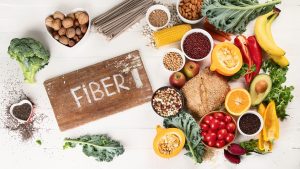 Fiber offers a lot of potential benefits. It can help improve digestion, gut health, and heart health. But it may also help control blood sugar to help you manage or prevent type-2 diabetes.
Fiber offers a lot of potential benefits. It can help improve digestion, gut health, and heart health. But it may also help control blood sugar to help you manage or prevent type-2 diabetes.
Fiber, and particularly soluble fiber, may slow the absorption of sugar in diabetics. This can help reduce the chance of blood sugar spiking too high or getting too low, helping to regulate levels.
Advertisement
Further, a healthy diet rich in fiber can significantly reduce the risk of getting type-2 diabetes.
Including more fiber, however, isn’t always easy. It could involve completely changing how you eat. It also takes some time for your body to adjust. Going from 0 to 100 in fiber intake can lead to plenty of discomfort.
Going too hard on fiber, too fast, can cause gas, bloating, diarrhea, and cramps. It’s not fun.
Thankfully, these symptoms are short-lived and can be managed with a gradual approach to fiber intake.
Fiber puts your gut bacteria to work, and if it is not used to the process, there will be some lag time. To circumvent the symptoms, aim to include one high-fiber food in your diet per day. If you’re feeling okay after a week, add another. Continue until you’re up to 28 grams per day.
In addition to eating more fiber, you’ll need more water to help it move through you. Four 16-ounce servings of water throughout the day can help.
Advertisement
Another tip to help you avoid the potential symptoms of fiber is to spread intake over the day. Too much at once will make things very hard on your gut.
How can you include it in your diet? Here are a few ways:
- Eat at least three servings of vegetables and two servings of fruit per day (one piece of fruit, a half cup of fruit/veggies, one cup of leafy greens).
- Try to include fruit and veggies with every meal (fruit can be a great dessert)
- Try to eat beans, lentils, and other legumes a couple of times per week. They can be a substitute for meat or starchy sides.
- Snack on nuts, seeds, and snacks
- Opt for whole grains instead of refined ones
Increasing fibrous foods in your diet may also help improve blood sugar by reducing the intake of sugary snacks.
